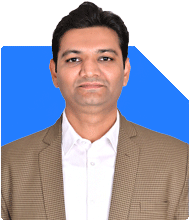Investment horizon is 4-5 years, high risk taking capacity. Please evaluate the MF portfolio. HDFC Infrastructure Fund 1000
HDFC Index Fund BSE Sensex Plan 5000
Nippon India Small Cap Fund 5000
Canara Robeco Bluechip Equity Fund (G) 5000
Bandhan core equity fund 5000
Motilal Oswal Midcap Fund 5000
JM Flexicap Fund 5000
Ans: Your current mutual fund portfolio reflects a mix of investment strategies. This blend of funds covers large-cap, mid-cap, small-cap, and sector-specific investments. Such diversification is a smart approach, as it spreads risk across different market segments.
However, there are some concerns, particularly with the choice of funds, that may impact your portfolio's overall performance.
Active vs. Index Funds
Let's start with the HDFC Index Fund BSE Sensex Plan. While index funds track a specific market index and are generally low-cost, they may not always deliver the best returns, especially in a dynamic market like India. The Indian market offers plenty of opportunities for skilled fund managers to outperform the index. Actively managed funds, guided by experienced fund managers, have the potential to capitalize on market inefficiencies, offering better returns over time.
Index funds lack this flexibility. They mirror the index, meaning they can't take advantage of market opportunities or avoid underperforming sectors. In an actively managed fund, the fund manager can make timely adjustments, potentially enhancing returns and managing risk better. Given your investment horizon of 4-5 years, you might find that actively managed funds offer a better risk-adjusted return.
Importance of Sectoral Funds
Now, looking at the HDFC Infrastructure Fund, sectoral funds like this one focus on specific industries, which can lead to higher volatility. While the infrastructure sector has growth potential, it is also subject to various risks, such as regulatory changes, economic cycles, and policy shifts. Over-reliance on a single sector can lead to significant fluctuations in your portfolio's value.
Given your short investment horizon of 4-5 years, it might be wise to reconsider such a sectoral focus. Instead, a diversified fund with exposure to multiple sectors can offer more stability and better risk management.
Evaluating Small Cap and Mid Cap Funds
Your portfolio includes Nippon India Small Cap Fund and Motilal Oswal Midcap Fund. Small and mid-cap funds are known for their potential to deliver high returns, but they come with higher volatility. These funds invest in smaller companies that can grow rapidly but are also more susceptible to market downturns.
Given your high-risk tolerance, these funds could align with your goals. However, it is essential to balance them with other funds in your portfolio. The key here is not to over-allocate to small and mid-cap funds, as this could expose you to unnecessary risk.
Large Cap and Flexicap Funds
The inclusion of Canara Robeco Bluechip Equity Fund (G) and Bandhan Core Equity Fund in your portfolio provides a good foundation. Large-cap funds tend to be more stable, offering consistent returns over time. They invest in established companies with strong market positions, which can provide a safety net in volatile markets.
JM Flexicap Fund offers flexibility by investing across market capitalizations, which can be beneficial. It allows the fund manager to shift allocations based on market conditions, enhancing potential returns and managing risk effectively.
Assessment of Your Portfolio
You have invested in several mutual funds with different focuses:
HDFC Infrastructure Fund
Focus: This fund primarily invests in infrastructure companies.
Risk Level: High, given the sector's cyclical nature and dependency on economic conditions.
Performance: Sector funds can deliver strong returns during growth phases but may underperform in downturns.
Suitability: Given your 4-5 year horizon, this fund adds sector-specific risk. Consider reducing exposure to mitigate volatility.
HDFC Index Fund BSE Sensex Plan
Focus: This fund mirrors the BSE Sensex index.
Risk Level: Moderate, as it tracks the performance of top 30 companies in India.
Performance: Index funds generally have lower costs but also limited potential for outperformance.
Disadvantages: The lack of active management may result in missed opportunities for better returns. Actively managed funds often outperform in volatile markets.
Suitability: For a high-risk taker with a 4-5 year horizon, active management could provide better returns than this index fund.
Nippon India Small Cap Fund
Focus: This fund invests in small-cap companies with high growth potential.
Risk Level: High, due to the volatile nature of small-cap stocks.
Performance: Small-cap funds can deliver significant returns, but they are also prone to sharp declines during market corrections.
Suitability: Given your high-risk tolerance, this fund is suitable for growth, but it should be balanced with less volatile funds.
Canara Robeco Bluechip Equity Fund (G)
Focus: This fund invests in large-cap companies, providing stability and steady growth.
Risk Level: Moderate, as large-cap companies are usually more stable.
Performance: Large-cap funds offer consistent returns and are less volatile than mid or small-cap funds.
Suitability: This fund is well-suited to balance the higher risk funds in your portfolio.
Bandhan Core Equity Fund
Focus: This fund invests across market capitalizations, providing diversification.
Risk Level: Moderate to high, depending on its allocation to mid and small-cap stocks.
Performance: Flexi-cap funds can adapt to market conditions, offering growth potential with some risk.
Suitability: This fund adds flexibility to your portfolio, making it a good choice for your investment horizon.
Motilal Oswal Midcap Fund
Focus: This fund invests in midcap companies, which offer growth potential with moderate risk.
Risk Level: High, but generally less volatile than small-cap funds.
Performance: Midcap funds can outperform in a growing economy but may lag in uncertain times.
Suitability: This fund is suitable for your risk profile and adds growth potential to your portfolio.
JM Flexicap Fund
Focus: This fund invests across large, mid, and small-cap stocks.
Risk Level: Moderate to high, with the ability to shift focus based on market conditions.
Performance: Flexi-cap funds offer a balance of growth and stability, depending on market conditions.
Suitability: This fund’s flexibility is an advantage, making it a good fit for your portfolio.
Portfolio Analysis
Your portfolio is diversified across sectors, market capitalizations, and investment strategies, which is commendable. However, there are areas where adjustments could improve your potential returns while managing risk.
Sector Exposure: The HDFC Infrastructure Fund adds concentrated sector risk. Sector funds can be volatile, so it's wise to limit exposure, especially with a 4-5 year horizon.
Index Fund Allocation: The HDFC Index Fund BSE Sensex Plan has limitations. While it provides market exposure, actively managed funds might offer better returns due to professional stock selection, particularly in a high-risk, shorter investment horizon.
Small and Midcap Funds: You have a strong allocation to small and midcap funds. This is aligned with your risk tolerance, but ensure these funds do not dominate your portfolio. Balance is key.
Flexibility and Stability: Funds like Canara Robeco Bluechip Equity Fund and JM Flexicap Fund add necessary stability and flexibility. These should remain core holdings in your portfolio.
Suggested Portfolio Adjustments
To enhance your portfolio, consider the following adjustments:
Reduce Sector-Specific Risk: Consider reducing your exposure to the HDFC Infrastructure Fund. Reallocate this to a diversified equity fund or a balanced fund that offers growth with less sector concentration.
Increase Actively Managed Funds: Shift from the HDFC Index Fund to an actively managed large-cap or flexi-cap fund. This shift could provide better returns by leveraging the expertise of fund managers.
Maintain Small and Midcap Exposure: Continue your investments in Nippon India Small Cap Fund and Motilal Oswal Midcap Fund. These funds align with your risk tolerance, but monitor their performance and rebalance if they underperform.
Balance with Large-Cap Stability: Continue with Canara Robeco Bluechip Equity Fund and Bandhan Core Equity Fund. They provide stability and diversification, helping to smooth out the volatility from small and midcap funds.
Utilize Flexi-Cap Funds: Keep JM Flexicap Fund in your portfolio. Its flexibility to shift between large, mid, and small caps based on market conditions will benefit your portfolio during different market phases.
Disadvantages of Direct Funds
Direct funds often appear attractive because of the lower expense ratios compared to regular funds. However, investing in direct funds means you miss out on the valuable advice and support of a Certified Financial Planner (CFP). The lower cost can sometimes be a false economy, especially if you're not well-versed in market trends and fund management.
A CFP provides guidance on fund selection, portfolio rebalancing, and overall financial planning. This professional support can lead to better long-term outcomes. Additionally, regular funds, while slightly more expensive, offer access to this expertise, which can more than offset the higher cost.
Benefits of Regular Funds Through a Certified Financial Planner (CFP)
You may wonder why regular funds are preferred over direct funds, especially when there’s a small difference in expense ratios. Here’s why:
Expertise and Guidance: A Certified Financial Planner (CFP) provides expert advice tailored to your financial goals. They help you navigate complex financial decisions, ensuring your investments align with your objectives.
Active Monitoring: Regular funds managed through a CFP are actively monitored. The CFP can make timely adjustments to your portfolio, optimizing returns and managing risks.
Peace of Mind: Investing through a CFP relieves you of the burden of constantly monitoring the market. You benefit from their experience and insights, which can be invaluable in volatile markets.
Disadvantages of Direct Funds: Direct funds require you to manage your investments independently. This can be challenging if you lack the time or expertise to make informed decisions. Additionally, direct funds might not offer the same level of service and advice as regular funds managed through a CFP.
Rebalancing Your Portfolio
Given your short investment horizon and high-risk tolerance, it may be wise to rebalance your portfolio. You could reduce exposure to sectoral and small-cap funds, which are more volatile. Instead, consider increasing allocations to large-cap and flexicap funds, which offer a better balance of risk and return.
Focusing on Diversification
Diversification is key to managing risk. While your current portfolio is diversified across market caps, consider further diversification across asset classes, such as debt funds, to reduce risk. This is especially important given your investment horizon of 4-5 years, where market fluctuations can have a significant impact on your returns.
Reviewing Fund Performance Regularly
Regularly reviewing the performance of your funds is essential. Markets change, and so do the performance of funds. A fund that performs well today may not do so in the future. A Certified Financial Planner can help you assess whether your current funds are meeting your objectives or if adjustments are needed.
Final Insights
Your current portfolio is well-diversified, but there are opportunities to optimize it further.
Reducing sector-specific risk and increasing exposure to actively managed funds can enhance returns while managing volatility.
Maintaining a balance between small, mid, and large-cap funds will provide growth potential with stability.
Working with a Certified Financial Planner (CFP) ensures that your investments are professionally managed, providing peace of mind and potentially better returns over time.
Investing is a journey, and with careful planning and regular reviews, you can achieve your financial goals within your desired time frame.
Best Regards,
K. Ramalingam, MBA, CFP,
Chief Financial Planner,
www.holisticinvestment.in
























